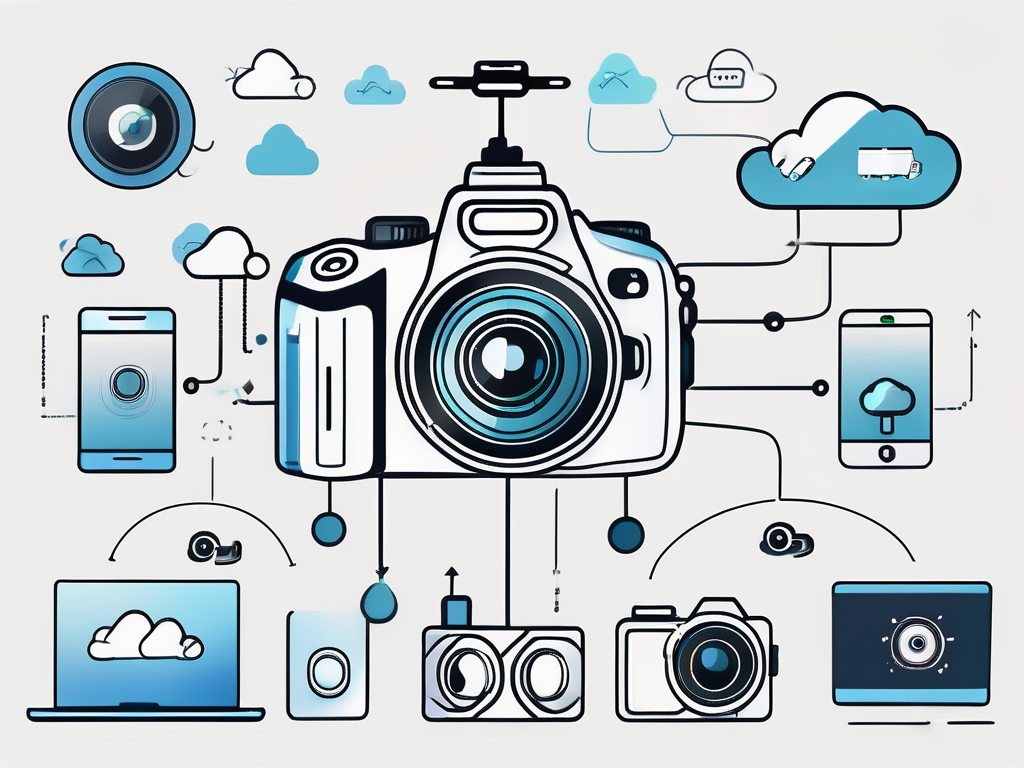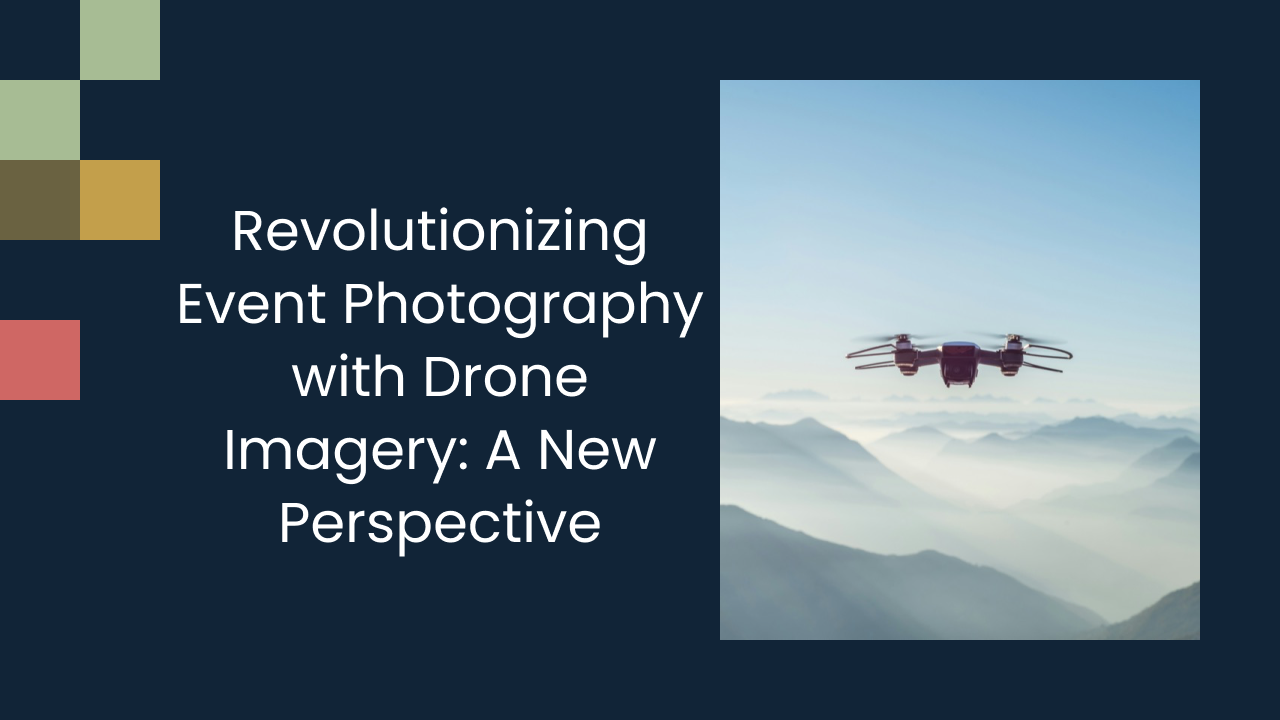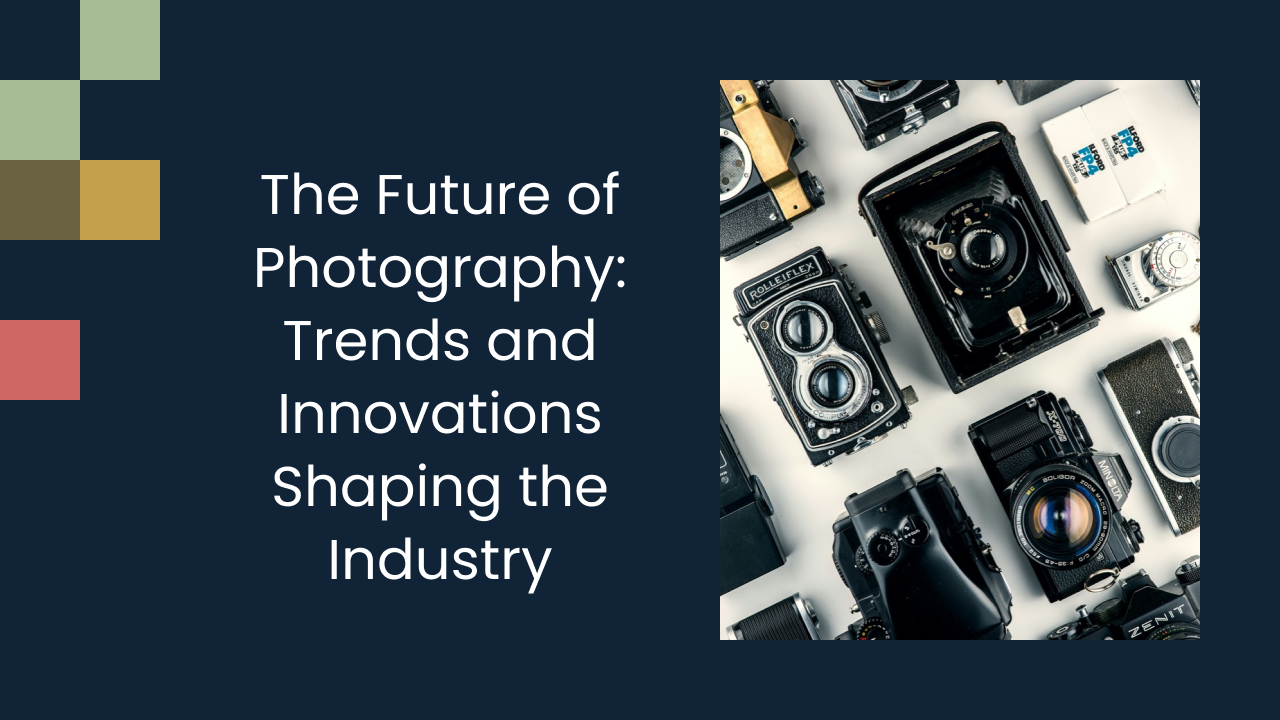Staying Ahead in Photography: Embracing New Tech and Trends
 In today's fast-paced world, staying ahead in any field requires embracing new technologies and keeping up with evolving trends. Photography is no exception. With advancements in digital technology and the rise of social media platforms, photographers need to adapt and embrace the changes to stand out and continue to excel in their craft.
In today's fast-paced world, staying ahead in any field requires embracing new technologies and keeping up with evolving trends. Photography is no exception. With advancements in digital technology and the rise of social media platforms, photographers need to adapt and embrace the changes to stand out and continue to excel in their craft.
Understanding the Evolution of Photography
Before diving into the impact of new technologies on photography, it's important to have a brief understanding of how this art form has evolved over time. From the early days of film photography to the digital era, the industry has undergone significant transformations.
Photography, as we know it today, has come a long way since its inception. It all started with the camera obscura, a simple device that allowed artists to project an image onto a surface. This laid the foundation for the development of the first true camera, the pinhole camera, which used a small hole to capture light and create an image.
Fast forward to the 19th century, and we see the birth of film photography. This revolutionary technique allowed photographers to capture images on light-sensitive film, which could then be developed and printed. It was a time-consuming process that required precision and skill, but it opened up a whole new world of possibilities for capturing moments in time.
From Film to Digital: A Brief History
The shift from film to digital photography marked a major turning point in the industry. Gone are the days of waiting for film to be developed, as digital cameras now capture and store images instantly. This revolutionized the way photographers work, allowing for greater flexibility and efficiency in capturing and editing images.
With the advent of digital photography, photographers no longer had to worry about running out of film or the cost of developing multiple rolls. They could now take hundreds, even thousands, of photos without any additional expense. This newfound freedom allowed photographers to experiment and push the boundaries of their creativity.
Furthermore, digital cameras brought with them the ability to instantly review and delete photos. This meant that photographers could immediately see the results of their shots and make adjustments on the spot. It was a game-changer, as it allowed for instant feedback and improvement.
The Impact of Technology on Photography
Advancements in technology have had a profound impact on photography. From high-resolution sensors to faster autofocus systems, these developments have made it easier than ever to capture stunning photographs. Moreover, the accessibility of affordable, high-quality cameras has opened up the field to a wider audience, leading to increased competition.
One of the most significant advancements in recent years has been the rise of smartphone photography. With the ever-improving camera capabilities of smartphones, almost everyone now has a powerful camera in their pocket. This has democratized photography and allowed people from all walks of life to express their creativity through images.
Additionally, the development of editing software and apps has given photographers a whole new set of tools to enhance and manipulate their images. From basic adjustments like brightness and contrast to more complex techniques like compositing and retouching, photographers now have endless possibilities for creating their desired aesthetic.
Looking ahead, the future of photography is bound to be shaped by further technological advancements. From the integration of artificial intelligence in camera systems to the exploration of new materials for image capture, the possibilities are endless. As technology continues to evolve, so too will the art of photography, pushing the boundaries of what is possible and inspiring generations of photographers to come.
The Role of New Tech in Modern Photography
New technologies continue to shape the world of photography, presenting both opportunities and challenges for photographers. As the digital age progresses, photographers are constantly adapting to the latest advancements in technology to push the boundaries of their craft and create captivating visual stories.
The Rise of Drone Photography
One of the most exciting advancements in recent years is the rise of drone photography. Drones equipped with high-resolution cameras allow photographers to capture breathtaking aerial shots that were once only possible from helicopters or planes. This innovative technology has opened up new creative possibilities and perspectives.
Imagine soaring above a majestic landscape, capturing sweeping panoramic views that showcase the grandeur of nature. With drones, photographers can now explore previously inaccessible locations and capture images that evoke a sense of awe and wonder. From towering mountains to vast oceans, drone photography has revolutionized the way we experience and appreciate the world around us.
Moreover, the use of drones has not only expanded the artistic possibilities but has also found practical applications in various industries. Aerial photography has become an invaluable tool for real estate agents, allowing them to showcase properties from unique angles and highlight their best features. Additionally, drones are used in environmental research to monitor wildlife populations, track changes in landscapes, and aid in conservation efforts.
The Influence of Smartphone Cameras
With the widespread adoption of smartphones, almost everyone now has a camera in their pocket. Smartphone cameras have become increasingly capable, with multiple lenses, night mode capabilities, and powerful image processing algorithms. This has led to a surge in mobile photography and the emergence of a new breed of photographers who primarily use their smartphones to capture stunning images.
Smartphone photography has democratized the art form, allowing individuals from all walks of life to express their creativity and share their unique perspectives. Social media platforms have become virtual galleries, where aspiring photographers can showcase their work and connect with a global community of like-minded individuals. The accessibility and convenience of smartphone cameras have given rise to a new era of visual storytelling, where moments can be captured and shared instantaneously.
Furthermore, the integration of advanced computational photography techniques in smartphones has revolutionized the way we capture images. Night mode capabilities have made it possible to capture stunning low-light shots, revealing details that were once hidden in the darkness. Portrait mode, with its sophisticated depth-of-field effects, allows photographers to create professional-looking portraits with just a few taps on the screen.
The Power of Editing Software
In addition to capturing images, modern photographers also rely on editing software to enhance their work. Editing tools such as Adobe Photoshop and Lightroom allow photographers to fine-tune their images, adjust colors, and apply creative effects. These software options enable photographers to craft their vision and create unique visual narratives.
Through the power of editing software, photographers can transform a good photograph into a masterpiece. They can manipulate lighting, remove distractions, and bring out the true essence of their subjects. With a wide range of tools and techniques at their disposal, photographers can experiment with different styles and aesthetics, adding their personal touch to each image.
Moreover, editing software has become an essential part of the creative process, enabling photographers to express their artistic vision beyond the limitations of the camera. Through post-processing, photographers can create surreal landscapes, vibrant portraits, and conceptual art that challenges conventional notions of reality. The possibilities are endless, limited only by the photographer's imagination and technical skills.
In conclusion, new technologies have revolutionized the field of photography, offering photographers unprecedented opportunities to explore their creativity and push the boundaries of their art. From the rise of drone photography to the influence of smartphone cameras and the power of editing software, photographers are embracing these advancements to capture and create images that inspire, provoke, and captivate audiences around the world.
Exploring Current Photography Trends
Keeping up with current trends is essential for staying relevant in the photography industry. Here are a few trends that are shaping the field:
The Popularity of Minimalist Photography
Minimalist photography, characterized by clean lines, simplicity, and negative space, has gained significant popularity in recent years. This style focuses on stripping down the composition to its bare essentials, resulting in striking and visually impactful images.
The Resurgence of Black and White Photography
Black and white photography has stood the test of time and continues to captivate audiences. The absence of color allows photographers to convey emotions and tell stories in a unique and powerful way. It forces viewers to focus on the subject and the composition, emphasizing the artistic elements of the photograph.
The Appeal of Street Photography
Street photography has become a prominent genre in recent years. Capturing candid moments of everyday life on the streets offers a glimpse into different cultures and human connections. Street photographers develop a keen eye for interesting compositions and decisive moments, turning ordinary scenes into extraordinary visual narratives.
Preparing for the Future of Photography
As technology continues to evolve, it's crucial for photographers to anticipate upcoming tech innovations and adapt to changing photography styles.
Anticipating Upcoming Tech Innovations
The future of photography holds exciting possibilities. From advancements in artificial intelligence to virtual reality and augmented reality integration, the field is poised for further transformations. Photographers who remain open to embracing new technologies and experimenting with innovative techniques will be at the forefront of this ever-evolving industry.
Adapting to Changing Photography Styles
Photography trends come and go, and it's essential for photographers to stay adaptable. By experimenting with different styles, photographers can expand their creative horizons and discover new ways to express their vision. This flexibility allows photographers to cater to changing client expectations and preferences.
Continuous Learning in the Photography Field
Lastly, staying ahead in photography requires continuous learning and self-improvement. As new technologies and trends emerge, photographers must invest time in honing their skills and staying up to date with the latest developments. This can involve attending workshops, participating in online classes, or joining photography communities to learn from peers.
In conclusion, embracing new technologies and staying informed about the ever-changing trends is essential for photographers who wish to stay ahead in their craft. By understanding the evolution of photography, exploring current trends, and preparing for the future, photographers can position themselves as innovative and skilled artists, ready to capture the world through a lens that embraces new tech and trends.
Looking for an easier way to manage and grow your studio? Experience a platform built by a photographer, for photographers. Try it free for 2 weeks.











